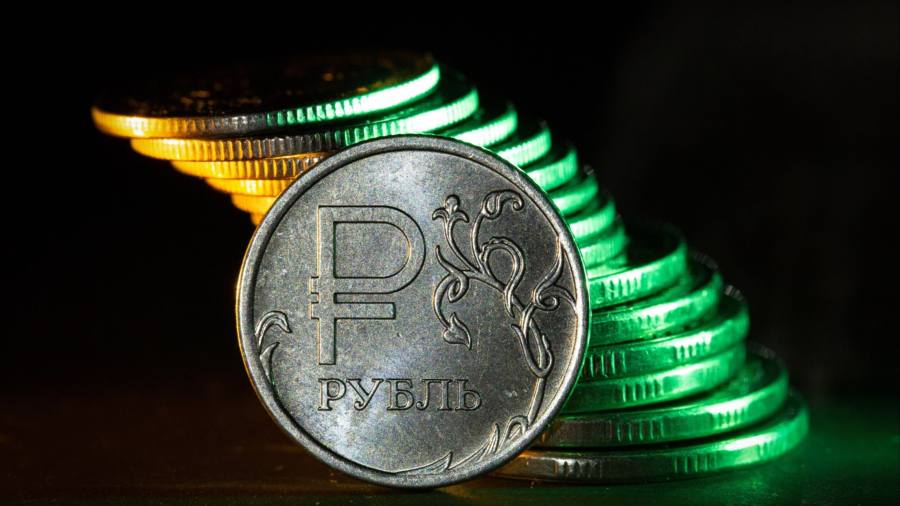Receive free Russian insurrection updates
We’ll send you a myFT Daily Digest email rounding up the latest Russian insurrection news every morning.
The rouble sank to its lowest level against the dollar since the aftermath of Russia’s full-scale invasion of Ukraine on Thursday, as the repercussions of Wagner’s aborted insurrection heap further pressure on a currency already groaning under the weight of western sanctions.
The Russian currency has lost a third of its value since December, trading at more than 90Rbs per US dollar on Thursday.
Yevgeny Prigozhin’s failed mutiny accelerated the drop of the rouble, which fell by over six per cent in just two weeks. But the decline had started months prior, as western sanctions continue to squeeze the Russian economy.
“Last weekend’s political crisis prompted cash outflow from rouble to dollar and to foreign banks,” said Natalia Lavrova, chief economist at BCS Global Markets. She said that on the day of the mutiny, Russians withdrew some Rbs100bn, an amount of withdrawals comparable to when the Kremlin announced a mass mobilisation in September.
The Kremlin acknowledged the drop and blamed it on a “significant amount of speculation” while seeking to reassure the public that such fluctuations have happened before and that the currency rebounded.
The decline reflected changes in the balance of trade, with imports rebounding and exports falling, said Alexandra Prokopenko, a non-resident scholar at Carnegie Russia Eurasia centre. “The rouble’s share in those imports is rising, resulting in fewer dollars entering the country,” she said.
“The flow of money into Russia is drying up, and the outflow of capital is increasing. All this is a direct consequence of the sanctions,” Prokopenko said.
In the first quarter of 2023, Russia’s trade balance contracted by more than three times year-on-year, the Russian Central Bank data shows.
Revenues from Russia’s main exports, oil and gas, fell by a quarter year on year in June. Total energy revenues accumulated since the beginning of 2023 decreased by almost a half to Rbs3.38tn ($37.3bn), the Russian finance ministry said in an update on Wednesday.
This marks the lowest half-year result in the past five years, excluding the Covid-19 pandemic in 2020. It reflects both the impact of western sanctions and Russia’s inability to compensate for the loss of the European gas market.
Capital outflows have also increased since the February 2022 invasion of Ukraine, with Russians moving more than $40bn in deposits outside the country, according to the central bank.
Read the full article here



